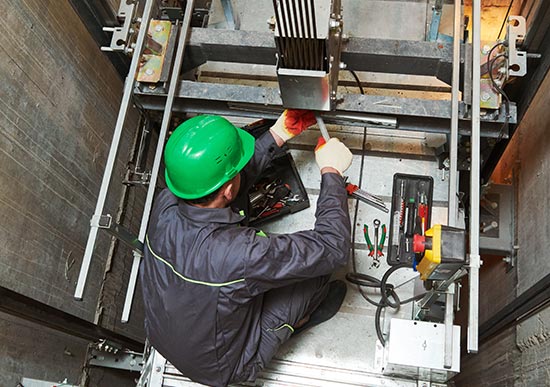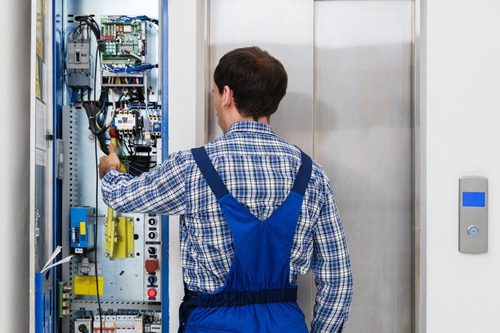Budget-friendly Lift Maintenance Services in London: Top Lift Repair Companies Near Me
Budget-friendly Lift Maintenance Services in London: Top Lift Repair Companies Near Me
Blog Article
Comprehensive Overview to Lift Solutions and Their Upkeep
Browsing the elaborate world of lift systems and their maintenance is a job that demands accuracy and knowledge. From the different types of elevator systems in use to the thorough adherence to security laws, the maintenance of these vertical transport devices is a diverse undertaking.
Kinds of Elevator Solutions
The most common kinds consist of hydraulic elevators, traction elevators, machine-room-less lifts, and vacuum cleaner lifts. Hydraulic lifts are perfect for low-rise buildings and make use of a hydraulic piston to relocate the lift car. Machine-room-less elevators are a space-saving choice as they do not require a different equipment area for the elevator machinery.
Each sort of elevator system has its own advantages and drawbacks, making it important for building owners and developers to thoroughly consider their particular needs before picking one of the most appropriate option. Factors such as constructing height, area accessibility, energy performance, and budget constraints all play a substantial duty in establishing the most effective lift system for a certain structure.
Common Maintenance Problems
Regular maintenance of lift systems is essential to guarantee smooth procedure and lengthen their life-span. Despite routine maintenance, lift systems can still encounter typical upkeep concerns that need to be immediately addressed to stop disruptions in service. Regular evaluations and aggressive upkeep can assist determine and settle these usual upkeep problems before they escalate and influence the total efficiency of the elevator system.
Safety Regulations and Conformity
Complying with stringent security guidelines and ensuring compliance with market criteria are extremely important for maintaining the operational integrity of lift systems. Elevators are subject to a detailed collection of safety and security regulations to protect travelers, upkeep employees, and the public. Governing bodies such as the Occupational Security and Health Administration (OSHA) in the USA and the European Lift Organization (ELA) in Europe develop guidelines that cover various facets of lift layout, setup, maintenance, and procedure.
Compliance with these regulations is not just a legal requirement yet also a moral obligation for building owners and lift upkeep firms. Normal evaluations, upkeep checks, and adherence to security protocols detailed in the regulations are vital to make certain the reliable and safe procedure of elevator systems.
Ideal Practices for Upkeep

Structure owners need to likewise consider spending in modernization upgrades to improve the performance and safety of their elevator systems. By complying with these ideal practices, lift systems can operate efficiently and safely, giving reputable vertical transport for passengers.

Advanced Technologies for Efficiency
Implementing advanced innovations in lift systems can dramatically boost operational efficiency and traveler experience. lift repair companies near me. One of the crucial innovations in elevator modern technology is the introduction of location control systems. These systems enable travelers to input their preferred floor before entering the lift, which after that guides them to the most efficient vehicle. By maximizing and lessening unnecessary quits travel courses, destination control systems reduce wait times and congestion in high-traffic buildings.
In addition, the combination of smart sensing units and predictive upkeep capacities has revolutionized lift upkeep. These sensing units can spot possible problems prior to they intensify, enabling proactive maintenance interventions and lessening downtime. In addition, the use of regenerative drives and energy-efficient components helps in reducing power intake and operating prices in elevator systems.
In addition, the implementation of cloud-based tracking and remote diagnostics enables real-time tracking of lift efficiency and immediate troubleshooting of any malfunctions. This positive strategy not just improves system reliability however also boosts the general individual experience by ensuring undisturbed and smooth elevator procedures.
Final Thought
In final thought, understanding the various kinds of elevator systems, common upkeep problems, safety policies, finest maintenance techniques, and progressed technologies for efficiency is essential for guaranteeing the smooth operation of lifts. By adhering to safety regulations and carrying out ideal techniques for maintenance, building owners can prolong the life expectancy of their elevator systems and make sure the safety and security of guests. It is necessary to stay updated on the most recent developments in elevator innovation to enhance effectiveness and dependability.
The most typical types include hydraulic elevators, traction elevators, machine-room-less lifts, and vacuum cleaner lifts. Hydraulic lifts look at here are suitable for low-rise structures and utilize a hydraulic piston to move the lift auto. Machine-room-less elevators are a space-saving option as they do not require a different equipment area for the lift machinery. Routine examinations and proactive maintenance can aid determine and settle these usual maintenance issues before they escalate and influence the overall performance of the elevator system.

Report this page